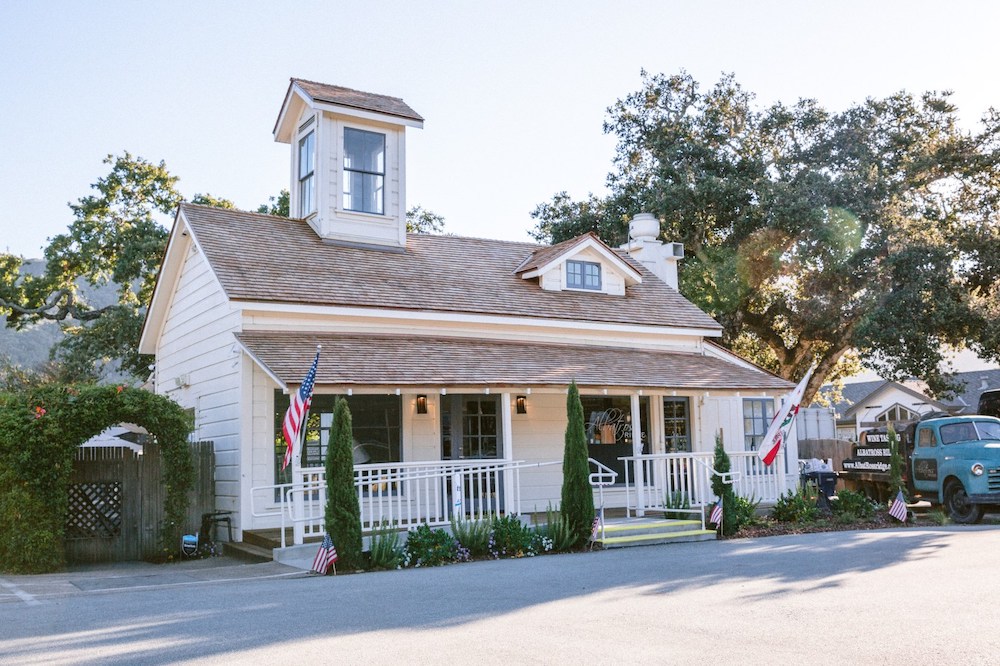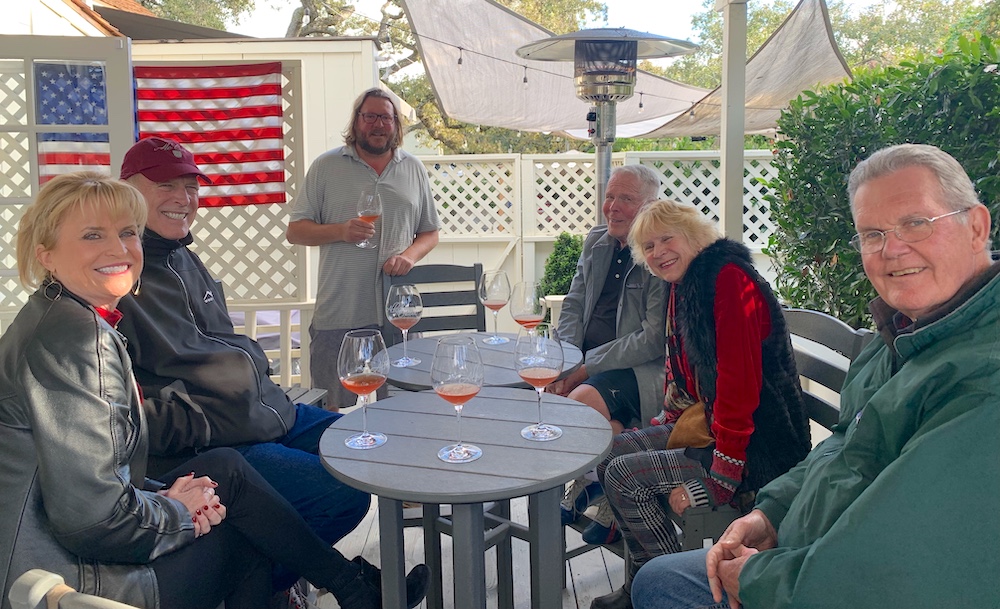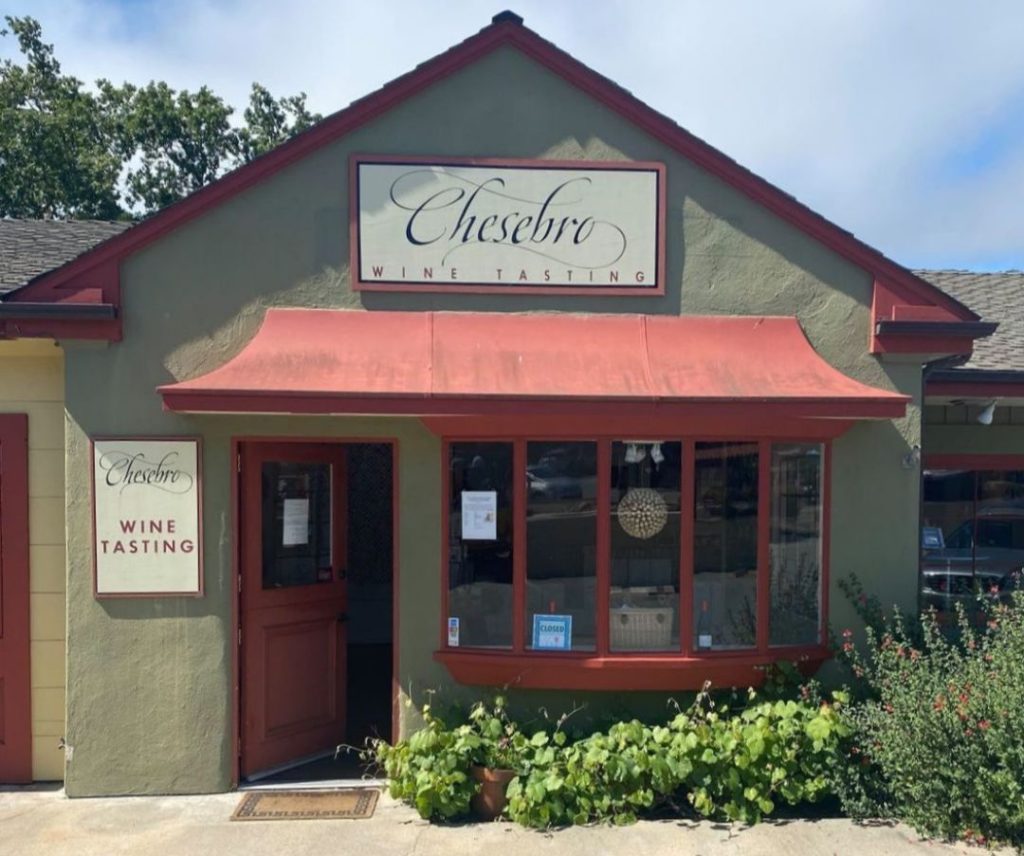
January 7, 2022 – Here’s hoping you gave 2021 a proper sendoff with some great wines. And that you are beginning the New Year with stellar new discoveries. A few Livermore friends and I visited some of my favorite spots in Carmel Valley on New Year’s Eve, including Boekenoogen, Café Rustica, Albatross Ridge and Chesebro.
We were on a quest for exciting whites, Pinot Noir and lighter style reds. Bernardus and Talbott (now with its tasting room in Carmel) have arguably been doing this for quite some time, but it’s great to see two guys named Garrett really stepping up their respective games in The Village.
First there’s winemaker, Garrett Boekenoogen, who has several new wines that garnered our attention. First, there’s a 2020 Sauv Blanc, from the Paloma Creek Vineyard at the family’s estate property in Carmel Valley, done in a rich creamy style, oozing lychee and melon, and a potent tropicality—definitely a world apart from SB grown in New Zealand or cooler parts of Monterey County.
The Boekenoogen 2019 stainless steel Chardonnay is a revelation: fermented in steel then aged in neutral barrels. It expresses the soul of their always stunning Chardonnay fruit from the Santa Lucia Highlands but without the overt impact of oak. And yet it is still there, giving the wine just enough weight and presence as it tiptoes across your tongue on its way to a striking finish. A complete wine, filled with pineapple and nectarine that ends in a standing ovation. The 2018 Estate Chardonnay is barrel fermented for a creamier delivery of all that sunny orchard fruit, layered with lemon cream. This medium weight beauty has what my friend Mike calls “cocktail wine drinkability.” It goes down way easy.
Their 2019 Estate Highlands Pinot Noir is magnificent in its aromas of ripe blackberries and damson plums, followed by its delivery of pure strawberry jam, cranberry chutney, ripe raspberry and baking spices, plus just a hint of sweet vanilla. This is solid, well-mannered Pinot Noir that plays the field and appeals to most everyone with its juicy acidity tempered by perfectly ripe fruit. A bit more intense in the acid profile and underpinned by distinctive earthiness is the 3-Clone Pinot Noir, comprised of Dijon 115 and 113 and Pommard 4, the classic harbinger of earthy, spicy depth. This one, with its vibrant cherry, pomegranate, clove, nutmeg and smoky plum won over the folks in my posse that enjoy a more complete and detailed expression of Pinot Noir.
Then it was on to the other Garrett in town, Albatross Ridge winemaker Garrett Bowlus, who presides over the Tasting Cottage, formerly the Cima Collina tasting room. He’s come such a long way since the early days of that teensy tiny tasting room in the square by Anton & Michel: the one with the tractor seats.

He regaled us with stories of working in Oregon in the Willamette Valley before it exploded and became a place where you can now step blindfolded in any direction and end up in a tasting room! He and his wife, Cassia, an Oregon native, whom he met while working there, thought about buying land there and planting a vineyard. But a trip to California about 16 years ago opened her eyes to the possibility of relocating their dream a bit further south. Garrett and his Dad started looking at land and ended up purchasing a parcel on Laureles Grade where Garrett’s great grandfather, Hawley, had landed a glider called the Albatross while perfecting its design. (He also worked with Lindberg, and developed the Airstream trailer prototype, but that’s another story.)
Father and son planted a 25-acre vineyard there in 2008 with Chardonnay (clone 15 and 96, but no Wente) and Pinot Noir (clones 828, 777, 115 and Pommard), and have been fine-tuning the wines as they discover the unique character of each portion of the plot, whose soils are largely marine seabed.
There are currently three ways to enjoy Albatross Ridge Chardonnay: the 2019 First Flight, which is 95% new oak, the balance of which was done in concrete; the 2019 Cuvee Beaudry, done in all neutral oak, and the 2019 Estate Chardonnay, done in 30% new French. Each wine shows of a different aspect, with First Flight being terrifically racy, like a glider tethered to the ground in a strong wind. The fruit soars despite the oak, but it’s definitely rich around the edges. It’s named in honor of Hawley Bowlus. The Cuvee Beaudry, on the other hand, is named for the couple’s son, now 5 years old and stubborn as they come. A few days before the family was about to go on vacation to Maui, Beau refused to comply with his teacher’s instructions, saying, “I’m going to Maui!” He developed the refrain, “Maui!” as an ongoing objection to any unsatisfactory suggestion. Garrett says his Dad just laughs when he watches his grandkid in action: now you know what I went through!
Daughter Vivienne, now 8, has a Pinot Noir named for her, so it’s only fair that Beau should have a wine named for him. The Chard itself is lovely, deft, intricately detailed by the use of one, two and three year used barrels, with no lees stirring. It sings of spritely lemon curd, bright nectarine and quince. The 2019 Estate Chardonnay is the classic approach, showing oak framing and a slightly richer depth, but still is all about lemon marmalade, lemon shortbread and a distinctive minerality and almost saline note. All three of these wines are delightful, airy interpretations of Chardonnay, clocking in around 13% alcohol.
Similarly, there is a wide portfolio of Pinot Noir, with some careful sorting of clones to create a range of flavor profiles. We started with the 2019 Cuvee Vivienne, a redolent perfumey and floral wine that dances on your tongue with strawberry, rhubarb and cranberry. Medium in weight and color, it sees just a kiss of oak. Then came the 2018 Estate Pinot Noir, a well-bred and finely honed combination of all four clones, with slightly more density and depth. Followed by the 2018 First Flight Pinot Noir, a full stopper with 100% new oak, dark and filled with toasty blackberry, deep cherry and bright plum notes. It’s a satisfying wine of major depth.
Bowlus also poured us a 2018 Syrah from the Nelson Family Vineyard in the Santa Cruz Mountains, with aromatics that precisely reflect its native habitat. The vineyard is planted on a former Christmas tree farm and consequently the wine sings like a choir of fir and spruce trees, surrounded by the bass notes of redwoods. Bright, spicy and provocative, this wine is like sleigh bells ringing in the crisp snow.
With a complete bummer of a crop (loss of 75%) in 2020, Bowlus knew he needed to source fruit from other areas to hedge his bets, so he’s already got a Cabernet from Paso Robles in the lineup as well. Who knows where he’ll look next – maybe Oregon?
The late afternoon winter air was crisp and dense, and starting to fall like a curtain of cold around us as we walked to the Chesebro tasting room, bright with artwork on the gallery-like walls. David is as unobtrusive a host as one could imagine, pouring wines and quietly waiting while we enjoyed each pour.

Mark Chesebro’s lineup is unparalleled in the Village. You won’t find the usual anything here. And it’s not because he wants to be avante garde or hip. He cares not for such posturing. He’s a farmer, through and through. As a longtime tender of two of the most storied vineyards in the region, Mission Ranch and Cedar Lane, both in the Arroyo Seco AVA. It’s a strange little piece of dirt, to be sure, characterized by rocks, rocks and more rocks, and blasted by terrific winds. At 18,250 acres, it takes up where the 22k acres of the Santa Lucia Highlands ends. The Arroyo Seco River cuts a deep gorge as it heads into the Ventana Wilderness, and eventually to the Pacific, the older vineyards here are in the eastern end where is at once chilly and almost warm. The farther west you go along the River, the hotter and drier it becomes. You move from a place where Sauv Blanc, Pinot Gris, Riesling and Pinot Noir are free to express their savory selves, to bleached blonde grassy plains where Merlot, Cabernet, Zinfandel and Syrah can thrive in the dessicating heat.
Cedar Lane is on the eastern end. Chesebro grows Vermentino here, a grape that loves the sandy soils of Liguria and Sicily. Crisp, but not quite bracing, it has pleasing notes of lime and Eureka lemon, salt water taffy, rosemary and a tiny bit of pine resin. You want this with baked oysters, cod or snapper with capers and lemon or artichoke soup. He also produces one of the finest Sauvignon Blancs in Monterey, made of the Musque clone, and an acrobatic airshow of everything you want, including lemongrass, grapefruit, passionfruit, peach and melon. If you’re looking for something rich, the 2015 Piedras Blancas from Chesebro’s home ranch in Carmel Valley, is a Rhone style white (85% Roussanne, 10% Vermentino, 5% Sauvignon Blanc) quite rich and voluminous in the mouth. This calls for Camembert.
One of my personal favorites at Chesebro is the 2018 Arroyo Seco Pinot Noir that combines Cedar Lane and Mission Ranch fruit. There are some seriously old vines and clones in this mix, making for a wine that is translucent, aromatically stunning and as bright, brisk, yet bold as you can find in a Pinot Noir under $25. There’s nothing not to love about this wine. It punches above its fighting weight every time.
Craving a Merlot? The 2017 Chesebro La Griva Merlot (70%) and Grenache (30%) from Cedar Lane is the kind of dependable and pleasing example that makes you wonder why more people aren’t making this grape. Mike was delighted. “This is the first Merlot we’ve had today!” He praised its true to varietal flavors, smooth tannins and utter drinkability. Bob said it was the kind of wine that is straightforward, enjoyable and easy.
Sometimes you don’t want to decipher a wine: you just want to drink it. This is such a wine. Perfect to begin the new year.
Savvy Sips
Looking for a fun way to get acquainted with wines from our environs as well as others that you might not otherwise encounter? The folks at VinoCruz have a great solution. Their new wine club offers a curated collection of 2-4 wines (generally in a 3 pack), with a focus on the Santa Cruz Mountains, but also occasionally featuring regional gems from Napa, Sonoma, Lodi and Old World selections. They source fantastic wines that are not generally available in a store and make them available to club members. Currently the club is set up to be quarterly, but with enough interest, they might add a monthly option. Additionally, wine club members enjoy 40% off regular restaurant bottle prices on a selection of over 50 wines. Come on down and try a few different wines over dinner and then take home something special at a great price.
About the author
Laura Ness is a longtime wine journalist, columnist and judge who contributes regularly to Edible Monterey Bay, Spirited, WineOh.Tv, Los Gatos Magazine and Wine Industry Network, and a variety of consumer publications. Her passion is telling stories about the intriguing characters who inhabit the fascinating world of wine and food.
- Laura Nesshttps://www.ediblemontereybay.com/author/lness/
- Laura Nesshttps://www.ediblemontereybay.com/author/lness/
- Laura Nesshttps://www.ediblemontereybay.com/author/lness/
- Laura Nesshttps://www.ediblemontereybay.com/author/lness/


